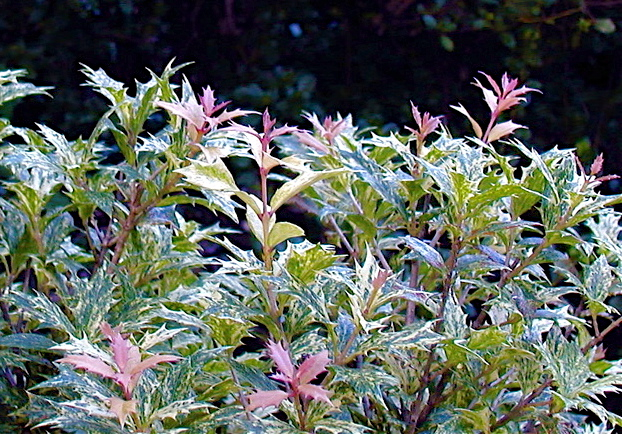Tea Olive for Fragrance
 Sunday, October 7, 2012 at 5:00AM
Sunday, October 7, 2012 at 5:00AM It could happen in the garden district of New Orleans or on Grandma's back porch in Mississippi. You stop and sniff.
What is that wonderful smell? Is it a rose? Or is it jasmine? Maybe a gardenia?
You look for blooms. No luck. Sniffing like a bloodhound, you finally run into a dense evergreen shrub, and there, tucked away in the deep green foliage, are clusters of tiny flowers.  You have discovered the sweet Tea Olive, and you will never forget the fragrance. You are enchanted for life.
You have discovered the sweet Tea Olive, and you will never forget the fragrance. You are enchanted for life.
Tea Olives (Osmanthus) grow in the Deep South and other parts of the country in hardiness zones 7-10. Another name is False Holly, and they do look similar to hollies but can be easily distinguished by looking at the leaves. Holly leaves grow in an alternate pattern, while tea olive leaves grow opposite each other.  Osmanthus heterophyllus is also called holly tea olive. It is one of the shorter varieties of tea olive. 'Goshiki' is a variegated cultivar I grow in my garden. There are many varieties. With a naturally upright shape, plants may reach 6 to 30 feet tall, depending on the type or cultivar. They are often used as screens or hedges, but they may also be featured as specimens.
Osmanthus heterophyllus is also called holly tea olive. It is one of the shorter varieties of tea olive. 'Goshiki' is a variegated cultivar I grow in my garden. There are many varieties. With a naturally upright shape, plants may reach 6 to 30 feet tall, depending on the type or cultivar. They are often used as screens or hedges, but they may also be featured as specimens.  Osmanthus fragrans is another type of tea olive I grow. This is a young specimen. In a garden setting it should have a slow to moderate growth rate to 6-10 feet tall and about 5 feet wide, though ultimately it could reach 20 feet.Some make beautiful small trees, while others can be maintained as low as 4 feet. Be sure to check the ultimate size of the shrub before planting, so that you get the right cultivar for your needs. All have tiny fragrant flowers, which can be creamy white to gold or orange.
Osmanthus fragrans is another type of tea olive I grow. This is a young specimen. In a garden setting it should have a slow to moderate growth rate to 6-10 feet tall and about 5 feet wide, though ultimately it could reach 20 feet.Some make beautiful small trees, while others can be maintained as low as 4 feet. Be sure to check the ultimate size of the shrub before planting, so that you get the right cultivar for your needs. All have tiny fragrant flowers, which can be creamy white to gold or orange.
If planted in the right location, these are great low maintenance shrubs, which is why I have chosen them for my garden. They have a naturally pleasing upright form, and pruning is optional, though one may prune them in early spring to encourage lush growth or to maintain size. They adapt to many soils, though they are happiest in moist, well drained, acidic soil, the type of soil also loved by azaleas and camellias.
They are tough plants that thrive on neglect, though I do fertilize in spring with an organic fertilizer for acid loving plants. Once established they are moderately drought tolerant, and they are also pest, deer, and disease resistent. They like sun to partial shade; in deeper shade they may be spindly and not produce as many flowers.
Hummingbirds and butterflies are attracted to the flowers. Most tea olives bloom from September through fall, and in some locations through the winter. One type, Osmanthus delavay, produces spring blooms. If you choose to prune this one, be sure to do so after it has finished blooming in spring, to avoid cutting off the flowers.
Tea Olives are long lived, enduring, and sweetly enticing; it's easy to understand why Osmanthus is a traditional symbol of romance. I am hopelessly sentimental, and I can't imagine my garden without these delightful shrubs.
 Permalink
Permalink